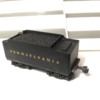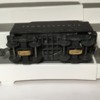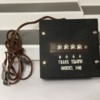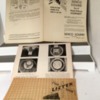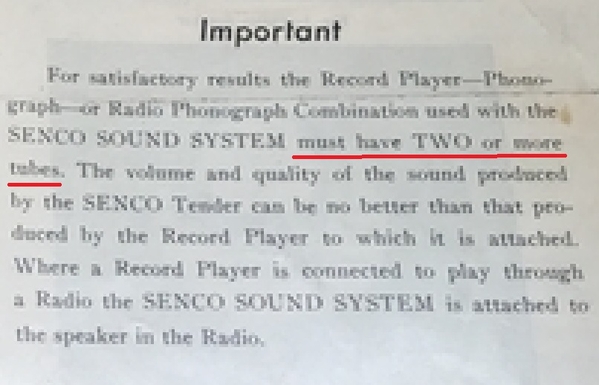Thought I’d share these Senco sound tenders that I’ve acquired over the past year or so. These were an early attempt at a sound system from 1947, and worked by connecting a record player to a box that was hooked up to the track and playing the sound through a speaker on board the tender. I don’t have the box, unfortunately, so I don’t have any way of hooking it up to work.
I have three of these tenders, but only one has the electronics inside of it - here's a photo of the three, plus a frame and some other parts.
Here's the underside of the one with its electronics - the speaker is clearly visible through the slats on the bottom.


Here's a closeup of one of the three rail Auel Industries trucks these ride on. Three rail Auel trucks with the electrical pickups are fairly rare, but found on all of these. The flanges are the most obvious difference between the two and three rail versions, but the three rail versions also have simplified bolsters and spring planks, and only have 2 springs on either side versus 3.

These tenders are fairly nice, but they don't fit well with anything. They are far too wide to look good with postwar Lionel, which is probably what they were intended to go with, and they are not detailed enough to fit well with scale models of the time. They're also very short, so only fit with small locomotives.

Here's one of the dummy couplers that these come with - probably the ugliest I've ever seen, with the oddly tapered shanks and rough cast look to them. No idea who made these, maybe Senco.

I have three records for these - one is labeled "297" and two are labeled "299"
On the one labeled 297, the A side is labeled "PENNSYLVANIA RAILROAD --- CALL ON THE FLAG LEAVING CRESTLINE." The B side is "AT UNION STATION PENNSYLVANIA'S BROADWAY LIMITED"
On the ones labeled 299, the A side is "PENNSYLVANIA RAILROAD SHORT RUNS STATION TO STATION . . NO ANNOUNCEMENTS . . . TWO COMPLETE RUNS." The B side is "PENNSYLVANIA RAILROAD --- LONG RUN WITH A WHISTLE CONFIRMING A STOP AT THE NEXT STATION."

And here's the instructions on how to set them up, expecting you to modify your record player:


I'd be interested in getting the mixer box that goes with these - it would be really neat to get one of these working.


















